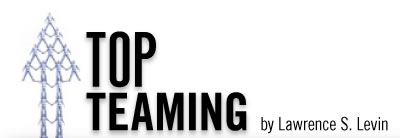Building and Improving Global Virtual Teams Part 3: Coaching Virtual Teams
In the previous two blogs, we discussed the promises and challenges in working virtually across geography, time, and culture. Virtual Teams, especially those that operate globally, are essential at both Leadership and Functional levels, and provide significant value in both their ability to think strategically and drive execution excellence across the company. These “lateral” teams are where work gets done, and as such are critical to the success of the enterprise.
Yet for all the promise and possibilities of GVT’s, the barriers to real success are daunting. Our work over the past several years has focused on how to best assess the key issues within virtual teams and significantly coach these groups of skilled, smart, and committed people to improve how they work together to drive value.
In almost every case we see, Virtual Teams have regular and well-agendized meetings. They are effective at identifying and coordinating the transactional aspects of business together. But are they as effective in thinking through strategic possibilities, identifying and resolving issues, and really utilizing this group of smart and diverse people in bringing their “collective intelligence” to the table? Our experience would tell us no. And the available research would bear this out. Rarely does a group of people who work together, but who are not together push back from the table and ask “How are we doing as a team?” and “What can we do to raise the bar of our work together?”
There are 3 key areas that every Virtual Team must address:
1. Awareness of the key issues: How and how often do we think about how we operate and where we must improve?
We utilize our Global Top Teaming Assessment (GT2A) to surface team issues and articulate the gaps between “where we are now and where we need to be as a team?” This comprehensive on-line assessment provides clear and actionable data that drives candid dialogue about team performance on a number of dimensions. And it is feedback that allows the team to ask one of the key questions: “How does this good team get even better?” This assessment also provides a baseline against which future improvement is measured.
Rather than list all the dimensions of this assessment within this blog, please contact us for a deeper look at how the assessment is built and its relevance for you.
2. Where must we improve and how do we do this?
As we deepen our shared awareness of what kind of team we need to be against the current and evolving demands of our business, the next big question is around defining the key leverage points for change and our approach to doing so. As in good executive coaching, we focus on 3-4 areas that have the greatest leverage and value. Time is the most important commodity for leaders and for teams, so we focus and clarify the approach. In our experience, almost every team we work with improves against their agreed-upon development plan.
3. What are the issues we must address and resolve?
While working closely with people who are not physically together is difficult enough, Global Teams offer even more complexity than other Virtual Teams. Time differences are usually greater, and diversity of culture can be more significant. For example, the concept of being “candid and open” is often different as you work across culture. I am a great believer in having “Trust over Peace” in teams, yet this is often difficult to achieve in teams that have not built strong informal relationships with one another.
Thus open discussions about cultural differences of assertion, candor, hierarchy, and surfacing differences are challenging, yet essential in building strong teams. The default setting for most teams is structure and sticking to the agenda. But the question we raise is about when, how often, and how honest are you in identifying and addressing the issues that restrain you from becoming an even better team – a Top Team?
This is wonderful and very fulfilling work. We are honored that most every team we are asked to work with is highly committed and very engaged in improvement. This is not a team-building exercise. Rather, it is pragmatic work in getting even better and bringing greater value to the enterprise.
For a deeper look at the Global Top Teaming Assessment and our process of Team Coaching, please contact us at [email protected] or look at our website on TopTeaming.com
Lawrence Levin PhD
Founder & President
The Levin Group LLC
+1 404 377 9408
[email protected]
www.TheLevinGroup.com
www.TopTeaming.com
“It is the in the constant journey of leaaders and the learning that occurs through dialogue and correction that great teams get it mostly right”
Author: Top Teaming: A Roadmap for Leadership Teams Navigating the Now, the New, and the Next
Contributing Author: Coaching for Leadership 3rdEdition: Writings on Leadership from the World’s Greatest Coaches
